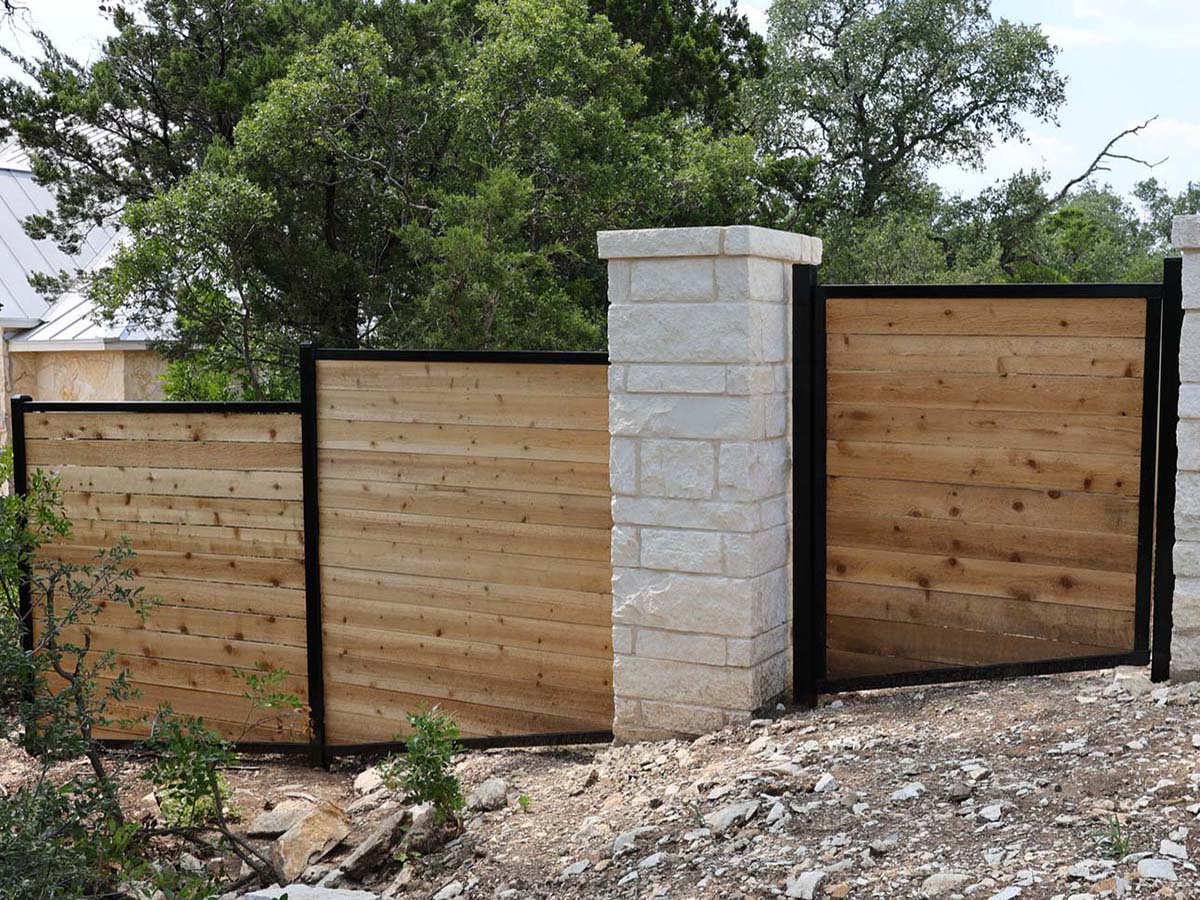All Categories
Featured

As sustainability comes to be a progressively crucial factor to consider for house owners, more people are transforming to environment-friendly fencing products. Whether you're building a fencing for privacy, protection, or aesthetic functions, picking materials that lessen environmental effect is a fantastic way to add to a healthier earth. Right here's an appearance at the leading environmentally friendly secure fencing materials available today and their benefits.
- Bamboo Fence: Fast-Growing and Eco-friendly. Bamboo is just one of the most lasting secure fencing products on the market. Unlike traditional timber, bamboo is extremely fast-growing, which indicates it can be harvested without depleting forests. This makes it an extremely sustainable source, with some types expanding up to 3 feet in a single day.
Ecological Advantages: Bamboo takes in a lot more carbon dioxide than lots of various other plants, aiding to balance out greenhouse gases. Its fast development rate suggests it can be harvested routinely, making it an eco-friendly material. Resilience: Bamboo fences are naturally immune to parasites and degeneration, specifically when properly treated, reducing the requirement for chemical therapies. Visual Allure: Bamboo gives an one-of-a-kind, all-natural look that enhances both traditional and modern-day landscaping designs. However, while bamboo is a wonderful option, it is necessary to guarantee that the bamboo made use of is sensibly sourced to prevent contributing to environmental degradation.
- Recycled Metal Fence: Recyclable and resilient. Recycled metal fencing, such as aluminum or steel, supplies an environmentally friendly alternative to traditional wood fencings. These metals are frequently made from recycled products, decreasing the need for new mining and the ecological influence linked with drawing out basic materials.

Ecological Benefits: Metals like aluminum and steel are 100% recyclable, meaning they can be reused and repurposed indefinitely without losing quality. Sturdiness: Metal fences are unbelievably long lasting, immune to weather, pests, and use, making them a durable choice that does not require to be changed regularly. Low Upkeep: Recycled metal fences call for very little maintenance and don't need to be repainted or secured on a regular basis, decreasing the need for added chemicals. The major disadvantage is that steel fences might not provide the exact same personal privacy as wood or vinyl options, as they can have gaps depending on the design.
- Recycled Wood Fence: Lasting and Natural. For those that enjoy the classic look of timber yet desire a green option, recycled wood fence is an outstanding selection. This product is made from reclaimed timber from old buildings, pallets, or also furnishings, drawing away these products from land fills.
Environmental Advantages: Utilizing recycled wood protects against the requirement to lower new trees, aiding to preserve forests and decrease deforestation. Aesthetic Appeal: Recycled timber offers a rustic, natural look and can be tailored to match any type of home design. Sustainability: Given that it is sourced from existing timber items, recycled timber does not call for new processing, which lowers power intake and carbon emissions. While recycled timber fences are an environmentally friendly option, they might need more maintenance over time than steel or bamboo fences, as timber can be vulnerable to degeneration and pests otherwise correctly dealt with.

- Living Fences: All-natural and Green. Living fencings, which are made from dense plantings like trees, bushes, or shrubs, offer a environment-friendly and entirely all-natural alternative to traditional secure fencing products. These fences not only provide personal privacy however likewise enhance your garden with beautiful greenery.
Environmental Advantages: Living fencings can soak up carbon dioxide, supply environment for wildlife, and improve air quality. Sound Decrease: Thick plantings can act as natural sound obstacles, decreasing web traffic noise or other undesirable noises. Aesthetic Allure: They include a soft, all-natural visual to any kind of home and can be customized to fit any type of style. While living fences are environment-friendly, they do call for routine upkeep such as trimming, watering, and often pest control.
- Hemp Fencing: Eco-friendly and Solid. Hemp is one more lasting material that has made its means right into the fencing market. Hemp fencings are made from strong hemp fibers that are woven with each other to create eco-friendly and durable panels.
Environmental Benefits: Hemp grows swiftly and requires very little water, making it a resource-efficient crop. The product is eco-friendly and can be composted when no more required. Stamina and Longevity: Hemp fencing is weather-resistant and remarkably solid, making it appropriate for numerous environments. Sustainability: Hemp farming requires fewer chemicals and plant foods than conventional crops, making it an eco liable option. Nevertheless, hemp fencing might not be as extensively readily available as other materials, relying on your place.
Conclusion: Lasting Selections for each Requirement. Selecting environmentally friendly secure fencing products is a great means to decrease your ecological impact while still achieving the privacy, protection, and aesthetic you want. From fast-growing bamboo to recycled wood and steel, there are a variety of lasting alternatives that can aid you develop a gorgeous, functional fence while supporting a healthier planet. By taking into consideration elements such as toughness, maintenance, and environmental effect, you can pick the ideal environment-friendly secure fencing material for your demands and way of life.
Latest Posts
Experience the Style of Hardwood Flooring with Carpet Interiors Floor & Home
Published Apr 19, 25
1 min read
Unequaled Quality and Custom Solutions for every single Home
Published Apr 19, 25
1 min read
Discover the Benefits of Hyundai's Added Programs at Ron Marhofer Hyundai
Published Apr 19, 25
1 min read
More
Latest Posts
Experience the Style of Hardwood Flooring with Carpet Interiors Floor & Home
Published Apr 19, 25
1 min read
Unequaled Quality and Custom Solutions for every single Home
Published Apr 19, 25
1 min read
Discover the Benefits of Hyundai's Added Programs at Ron Marhofer Hyundai
Published Apr 19, 25
1 min read